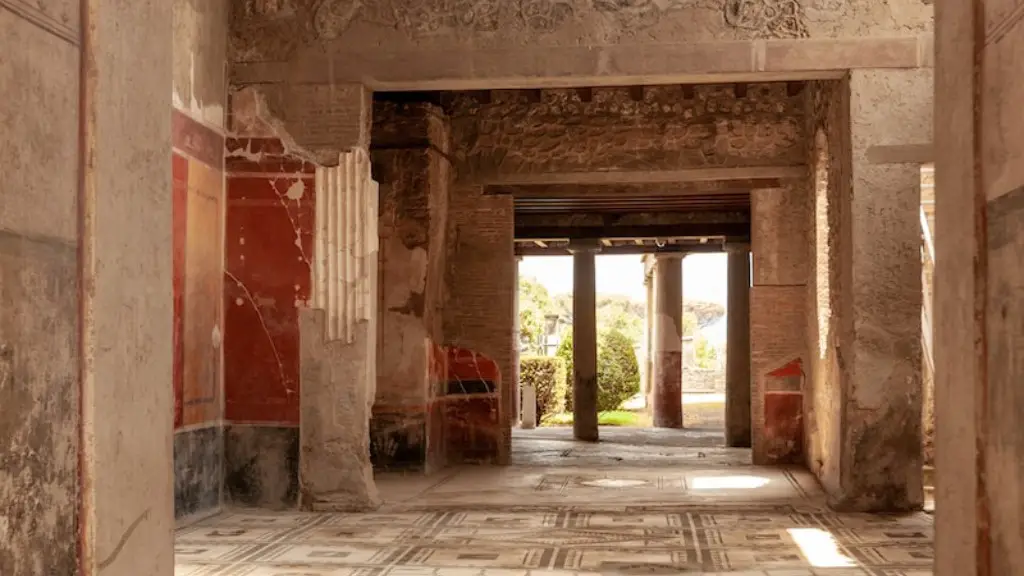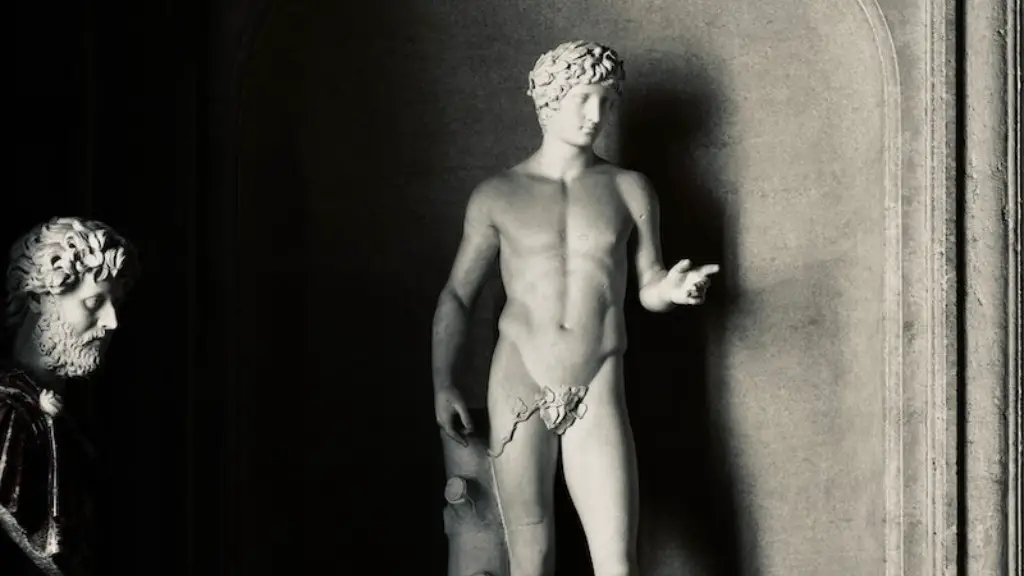Living Conditions
Life in ancient Rome was brutal, short, and often dangerous. The adolescent years were especially difficult, with many life-threatening illnesses, a high infant mortality rate, and a relatively small life expectancy rate. There were few resources available to assist teens in overcoming the harsh realities of life in this largely pre-industrialized society. Many Roman adolescents would find themselves living among other members of their extended family in a family-style setting. Living space would often be crowded and competition for resources was intense.
Many families lived in cramped quarters and a high percentage of homes lacked amenities such as indoor plumbing or electricity. Those who were not able to find adequate shelter would often live in insulae, tenement-style dwellings in urban areas, where the quality of life was often extremely poor. Roman youths were expected to help the family either on the farm or in an apprenticeship and were typically given little freedom to pursue leisure or educational activities.
Social Pressure
Social pressures were especially severe among adolescents in ancient Rome. Peer pressure was often intense and parents were quick to reprimand their children for minor missteps. Fathers had complete control of their children and were allowed to reward and punish their offspring as they saw fit. This often led to abusive behavior and teenage girls were subject to especially strict controls in line with the prevailing cultural norms of the time.
Roman teens were expected to marry between the ages of 14 and 16 and arranged marriages were common. Married teenage couples would often live separately until they established a household of their own although many young brides were expected to live with their husband’s family.
Educational Opportunities
Educational opportunities for Roman adolescents were limited. Most young people in Rome were expected to begin working at an early age and the majority of their energy was devoted to labor. Boys had the option of continuing their studies with the upper-classes if their father could afford it and were given the opportunity to learn Latin, literature, and rhetoric. Girls were expected to stay home and help with domestic tasks and were only given limited education in areas such as needlework.
The educational system was in disarray and classes were often without teachers or textbooks. This limited learning environment lead to gaps in knowledge and skills between the upper and lower classes, which further reinforced the existing class and economic distinctions. As a result, many adolescent Roman girls did not have the chance to learn more advanced skills such as reading and writing.
Religious Beliefs
Religious beliefs were a major factor in shaping the lifestyles of Romans, including their adolescents. The traditional Roman pantheon was quite complex and some of the gods and goddesses, such as Jupiter, Juno, and Minerva, were important figures in the lives of Roman youths. Religion provided a way for Roman teens to explore their identities, as rituals and festivals were often focused on age-groups, such as the rites of passage to adulthood.
Another major religious event for Roman adolescents was the Saturnalia, which was celebrated in December and featured a variety of activities, such as dressing up as gods and animals, feasting and drinking, and honoring Saturn with sacrifice. Such celebrations were a way for Roman teens to express themselves without fear of parental scrutiny. This was especially true for young women, who were typically excluded from public life and had limited opportunities for self-expression.
Leisure Activities
Leisure activities for Roman adolescents were limited. The upper classes were able to enjoy sports, theater performances, and banquets. For the lower classes, leisure time was often focused on simple pastimes such as gambling, drinking, and playing games. Roman youths were also fond of chariot races and it was not uncommon for adolescents to participate in these dangerous events.
Music was also an important factor in the lives of Roman adolescents and some sources suggest that young women were even able to play instruments in public, a practice otherwise reserved for men. Roman teens sometimes enjoyed outdoor activities, such as hunting, but this was forbidden for lower classes, who were also not allowed to own or train slaves.
Marriage and Social Status
Marriage was a common occurrence among Roman teens and could be beneficial for those from the upper-classes, as it represented increased social standing. However, marriage for teens from the lower classes often meant a life of servitude and increased responsibilities, resulting in a loss of freedom and self-determination.
Those who chose not to get married would often remain dependent on their parents until they could establish a career of their own. While this could provide teens with an opportunity to gain skill and experience, it also led to a state of economic insecurity, as jobs were often scarce. Further compounding the problem, Roman culture had strict laws governing sexual conduct with severe punishments for those who violated them.
Life Expectancy
Life for teenagers in ancient Rome could be difficult. Poor living conditions, limited opportunities for education, and strict social codes combined to create an environment in which adolescents often faced significant struggles. To make matters worse, the life expectancy of Roman teens was quite low, especially among those from the lower classes. For those who did manage to survive their adolescent years, they faced a difficult and uncertain life.
Mortality rates were high and life expectancies remained low throughout the Roman Empire. With an average life expectancy of just 30 years, most Roman teenagers did not survive to adulthood. For those fortunate few who did, they faced a hard and often challenging future.
Clothing and Personal Appearance
The clothing worn by Roman adolescents, like all Romans, was similar to modern clothing in many ways. Girls typically wore a knee-length tunic worn with a belt and often a shawl, while boys wore a toga or a tunic and trousers. Both sexes wore sandals, although boys often wore military shoes for extra protection. Jewelry was also worn and was often used to signify a person’s identity and social status.
Personal appearance was also particularly important to Roman adolescents. Hairstyles often denoted the individual’s identity, with fashionable trends changing from time to time. Girls typically had long braids or curls, whereas boys often had shorter, cropped styles. Cosmetics such as lipstick, powder, and rouge were also fairly common and were used to enhance the natural appearance of young Roman teens.
Recreational Activities
Recreational activities for Roman adolescents often differed depending on their social class. Upper class adolescents could enjoy activities such as hunting and racing chariots, while lower class teens had to resort to simpler pastimes such as playing board games or gambling. Music was also popular among Roman teens, and it is believed that young women were allowed to play instruments in public, which was otherwise prohibited.
Roman adolescents also enjoyed a variety of festivals and public holidays, including the Saturnalia which was celebrated in December. This was a time when Roman teens and adults alike could dress up as gods or animals, feast and drink, and generally let loose in a way not possible during the other months of the year.
Socialization
Socialization was a major part of life in ancient Rome, including for adolescents. Marriage and family were highly valued, and most Roman adolescents married relatively young. Girls typically married between the ages of 14 and 16 and boys, some of whom were as young as 12 years old, were expected to mark the transition into adulthood by taking a wife and hopefully securing a prosperous future for themselves and their family.
While marriage was the typical path for Roman adolescents, the upper classes were likely to follow the ‘salutary’ route, which saw them settling into a career and gaining higher social standing. This path was not available to teens from the lower classes, who were often expected to remain dependent on their parents and were unable to develop skills beyond those required for manual labor.
Conclusion
Life for adolescents in ancient Rome could be difficult and dangerous. Harsh living conditions, limited educational opportunities, strict social codes, and a high mortality rate meant that Roman teenagers often faced great adversity. Despite this, Roman adolescents still managed to find ways to enjoy life, whether it was through leisure activities or marriage. Life for Romans was often short and the future uncertain, but they still found time to celebrate and experience the joys of youth.





